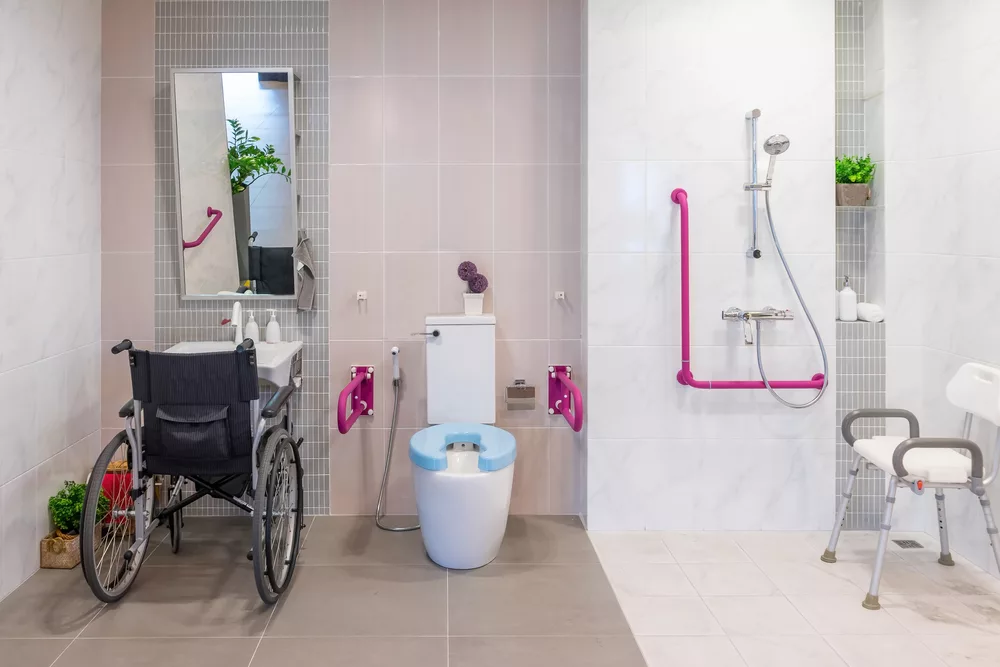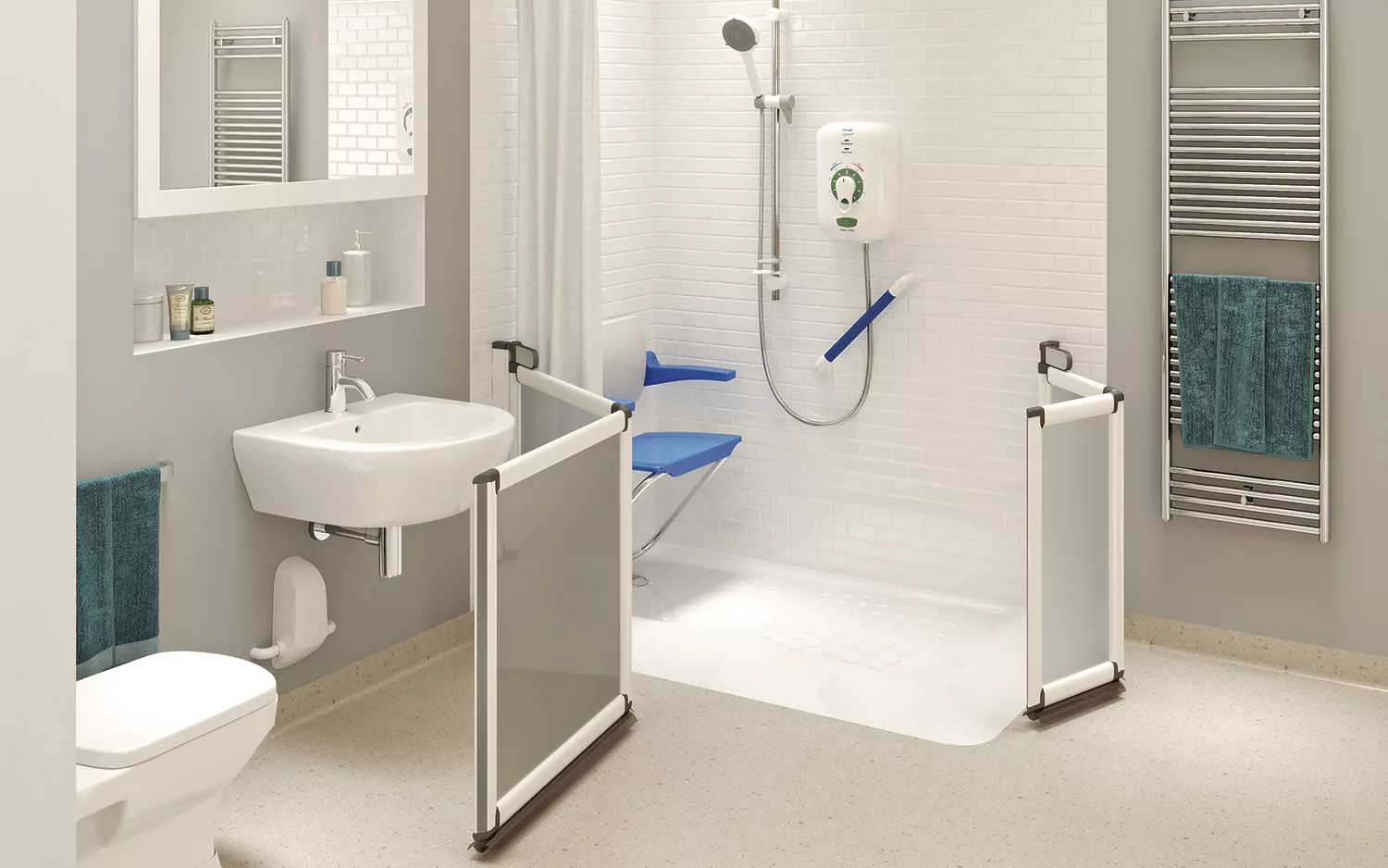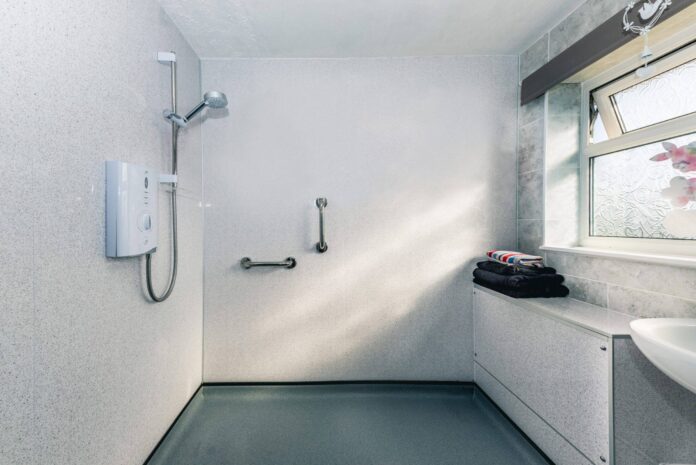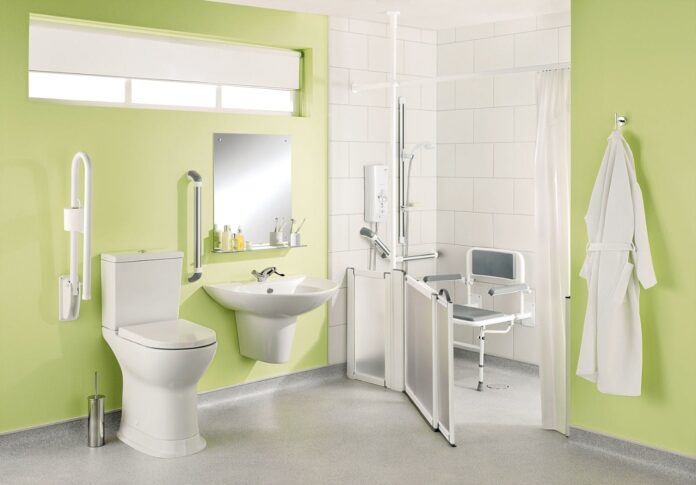A wet room is a valuable addition to any home, particularly for individuals with disabilities, the elderly, or those with specific health conditions that require an adapted bathroom. It provides a safe and accessible bathing space, promoting greater independence and quality of life.
However, the cost of installing a wet room can be a significant barrier for many. What you might not know is that you or someone you care for might be eligible for council funding to have a disabled wetroom installed. In this comprehensive guide, we will walk you through the step-by-step process of how to find trustworthy contractors and secure council funding for a disabled wet room.

How to Find a Reputable UK Contractor for a Wet Room
A reputable contractor with experience in mobility bathroom installations can make a significant difference in the quality and functionality of your new disabled wet room. Here’s a detailed guide from Age Care Bathrooms on how to find and choose the right contractor:
- Research and Referrals: Seek recommendations from friends, family, or acquaintances who have had similar accessibility modifications done in their homes. Referrals from trusted sources can provide valuable insights into the quality of work and professionalism of contractors.
- Online Reviews and Ratings: Utilise online resources to find contractors specialising in accessible bathroom installations. Websites like Checkatrade, Trustpilot, and Rated People offer reviews and ratings from previous customers. Read through these reviews to get an idea of a contractor’s reputation, reliability, and the quality of their work.
- Local Directories and Associations: Check local business directories or contact your local home builders’ association for a list of contractors specialising in accessible bathroom modifications. These resources often have listings of licensed and certified professionals.
Source: moreability.co.uk - Review Portfolios: Ask contractors for their portfolio of previous accessible bathroom projects. This will give you a visual representation of their work and help you determine if their style and quality align with your expectations.
- Enquire about Experience: When discussing potential contractors, enquire about their experience working with local councils and their familiarity with the council’s requirements. An experienced contractor should be well-versed in adhering to accessibility standards and be capable of handling any paperwork required for council compliance.
- Evaluate Quotations: Once you’ve gathered quotes from different contractors, take the time to evaluate them thoroughly. Consider not only the cost but also the scope of work, the materials to be used, and the estimated project timeline. Ensure all aspects of the project are clearly outlined in the quotation.
- Contracts and Agreements: Once you’ve made your choice, it’s essential to have a detailed written contract in place. The contract should outline the scope of work, project timeline, payment schedule, and any warranties or guarantees the contractor provides. Make sure to read and understand the contract thoroughly before signing.
- Completion and Quality Assurance: After the installation, ensure that the contractor conducts a final inspection to verify that the wet room meets the agreed-upon standards for accessibility, safety, and quality. Any necessary adjustments or corrections should be requested at this stage.
Finding a contractor who is committed to delivering a high-quality wet room that meets all of your specific needs can make all the difference. By following these steps, you can increase the likelihood of selecting a reputable mobility bathroom contractor.
Securing Council Funding for a Disabled Wet Room

Applying for a Disabled Facilities Grant from your local government can initially appear complicated. Here, we cover the application process step by step to help you understand and confidently complete it.
Step 1: Determine Eligibility
You need to own your home or if you are a tenant, securing written permission from your landlord is a prerequisite before embarking on the journey to apply for home adaptations. Another option is to contact your landlord or letting agent to find out if they would be willing to take the initiative to apply for these adaptations on your behalf.
Step 2: Apply for a Care Needs Assessment
The second step in seeking a Disabled Facilities Grant is to request a care needs assessment. This evaluation aims to determine your specific needs and the necessary adaptations for your property.
Prepare for a care needs assessment by listing all of the difficulties you or someone you care for currently face when using the toilet, sink, and shower facilities. These should address specific challenges or obstacles you face due to a disability, age, or health condition. The emphasis here is reinforcing that the adaptations you require are not merely aesthetic or optional but are essential for your overall safety and independence.
Step 3: Apply for a Disabled Facilities Grant (DFG)

Reach out to your local council to initiate the application process. You can find out who your local council is via the Gov.UK website. In most cases, you will be asked to provide various documents to support your application. These may include medical certificates, proof of identity, and financial information.
Organise all the necessary paperwork to avoid delays in the application process. The Citizens Advice Bureau can provide assistance if you are still determining the specific documents required or require assistance completing the application.
Step 4: Decision and Approval
Once your application is submitted, it will typically take around six weeks to be evaluated, and a decision must be given within six months. If your application is approved, you will be informed of the funding amount allocated for the wet room project. In some cases, the council may fully fund the installation, while in others, they may offer a partial grant. You will receive an official letter outlining the terms and conditions of the funding.
NB: Never start building work that you want to apply for a Disabled Facilities Grant (DFG) to cover. Once work has begun, a DFG can not be granted.
In the case of your disabled grant application not being approved, you will need to appeal the decision. You can contact the Citizens Advice Bureau for more information about how to do this.










